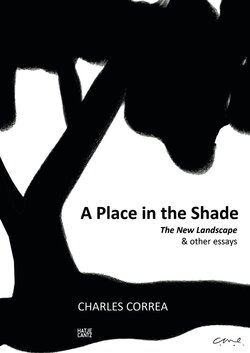Читать книгу Charles Correa - Charles Correa - Страница 4
На сайте Литреса книга снята с продажи.
ОглавлениеIntroduction
This book would never have come into existence without architect Luis Martinez of the Caja Architectura in Madrid. About three years ago I received a letter from Martinez, requesting permission to publish a Spanish edition of some of my essays which had appeared in various journals over the last many years. I was surprised—and flattered—because no one, myself included, had ever thought of compiling these haphazard and epithermal writings into a cohesive book. There was a certain amount of correspondence, back and forth, about the choice of essays, the order of their presentation, and so forth—and then about a year ago, there arrived on my desk a volume entitled Un lugar a la sombra. Elegant, austere, minimalist—it was something that only the Spanish could produce.
This book is really an extension of Martinez’s volume, with more essays included. Also added (in the last section), is the re-publication of a primer on the urbanization process that is changing our nation so swiftly—and so irrevocably. Written twenty-five years ago, and translated into Russian, Arabic and Chinese, it has been out of print for more than two decades now. The whole collection is entitled A Place in the Shade—a marvellously appropriate comment made by my friend Sherban Cantacuzino (quoted in the essay, ‘A Place in the Sun’).
The essays in this book cover a great many topics—because you cannot look at cities without wandering into architecture on the one hand and politics on the other. And you certainly can’t look at architecture without also encountering other areas as diverse as music and landscape and films and toy trains. And so these essays of necessity cover a considerable range, from the 19th century engineer Isambard Brunel to reflections on the ideal city, to Mahatma Gandhi and Ayodhya. And, of course, to the crucial role of the public and the private, the mythic and the sacred realms—which generate the habitat in which we live. As Churchill, not one of my heroes, once said, with devastating insight: ‘We shape our buildings . . . and then our buildings shape us.’ So throughout this collection of essays, the essentially pluralistic and life-accepting qualities of India surface time and again, qualities that have always been so basic to Hindu and Buddhist thought. And this is where the phrase ‘A Place in the Shade’ resonates again. For it evokes the shade of a great banyan tree, which stretches out to protect and nurture the endless diversity of India—an image that Howard Hodgkin brilliantly expressed in the mural he created for the British Council building in Delhi. As he said: ‘I want to give back to India at least a little bit of all she has given me.’
There are some other issues that may need explanation. This collection of essays and lectures, which cover a period of fifty years, have been intentionally left undated—so that they can be read as though they were written today. If they cannot stand that test, then they should not be considered for re-publication. (The actual dates and occasions of the lectures, and the names of the journals, are listed at the end of the book.)
Then again, there is a certain amount of redundancy of thought in some parts of these essays. Rather than iron these out, the editors feel they should be allowed to remain—since insights and ideas are like building blocks that the human mind assembles in different trains of thought to arrive at different destinations. The fact that the same building block can exist in two different sequences, reinforces its validity—or so they feel. What also became palpable, as we started assembling the various pieces together, was the unexpected continuity of ideas and concerns that went all the way back to ‘The New Landscape’—first published twenty-five years ago. So several of the problems discussed in the chapter ‘Political Will’ are still around (in a far more intense form, unfortunately) in the Tehelka interview ‘Managing Our Cities’. This is because in the intervening years nothing essential in the management of our towns and cities has been accomplished—for example‚ accountability, corruption, citizen feedback and so forth. In fact, the deteriorating situation of our urban centres is cause for the gravest concern.
Before I close, I would like to take this opportunity to thank the many people who helped this book come into being. First to Hatje Cantz Berlin, and in particular to its Director Cristina Steingräber, for her enthusiastic response to this venture; and to her colleagues Julika Zimmermann and Julia Günther, who supervised the design and production of the book. A big thank-you also to Nondita Mehrotra, for her invaluable advice and unstinted support—and also to those in my office who helped put it all together: in particular, Rohan Varma, Dhaval Malesha, Kanika Jamdar, and Vinita Gatne. Without their valiant efforts, this book would not have come into existence.
